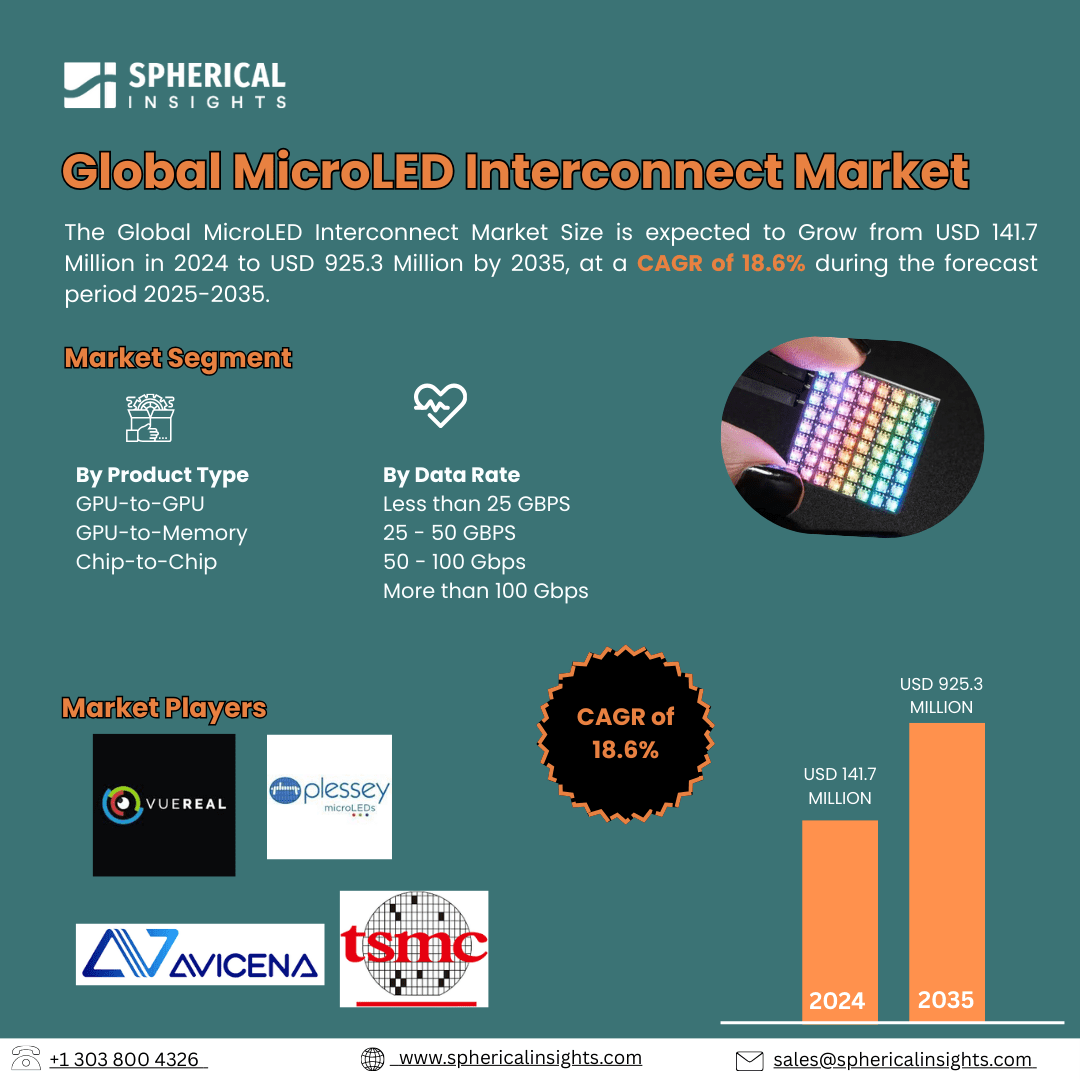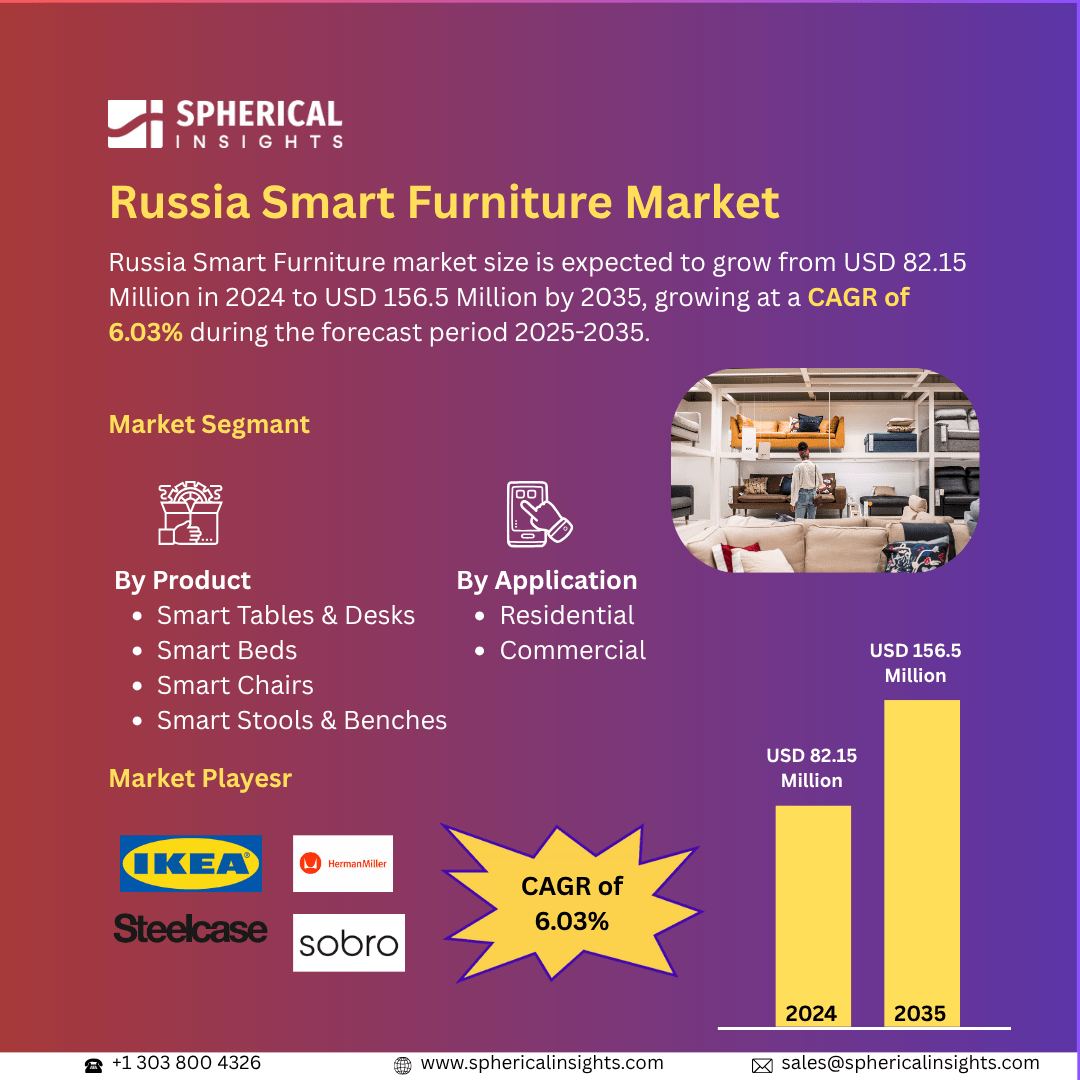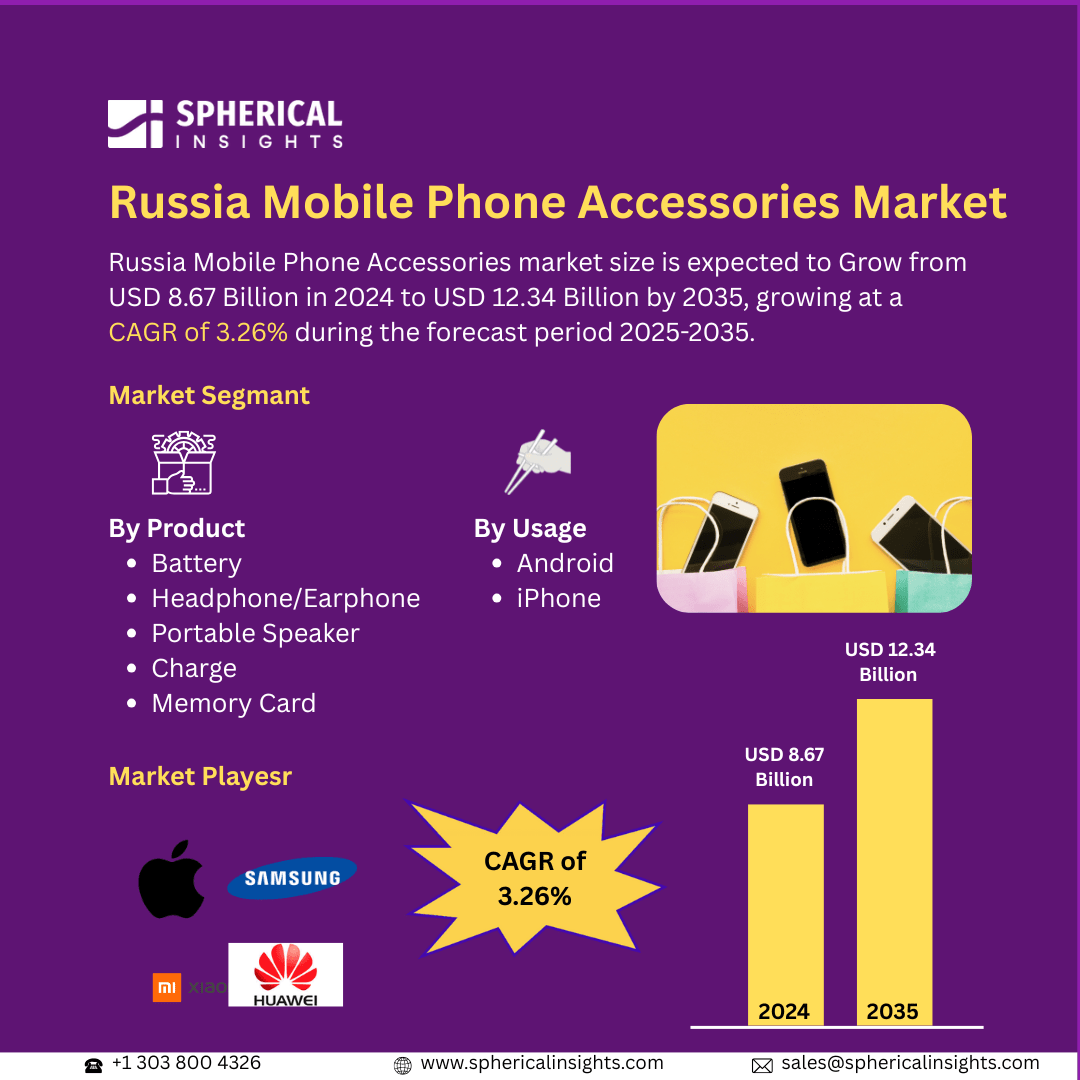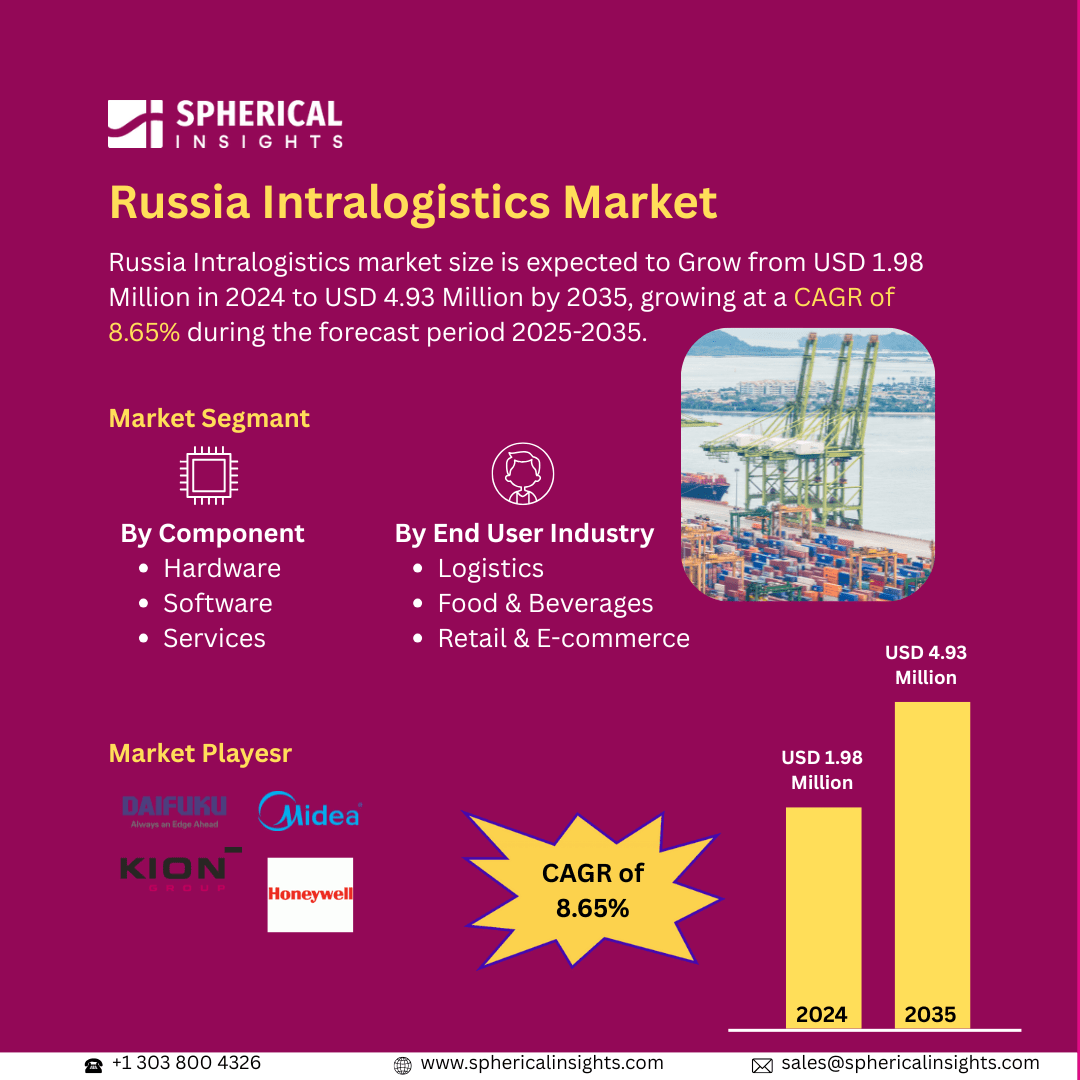Global MicroLED Interconnect Market Insights Forecasts to 2035
- The Global MicroLED Interconnect Market Size Was Estimated at USD 141.7 Million in 2024
- The Market Size is Expected to Grow at a CAGR of around 18.6% from 2025 to 2035
- The Worldwide MicroLED Interconnect Market Size is Expected to Reach USD 925.3 Million by 2035
- Asia Pacific is expected to grow the fastest during the forecast period.
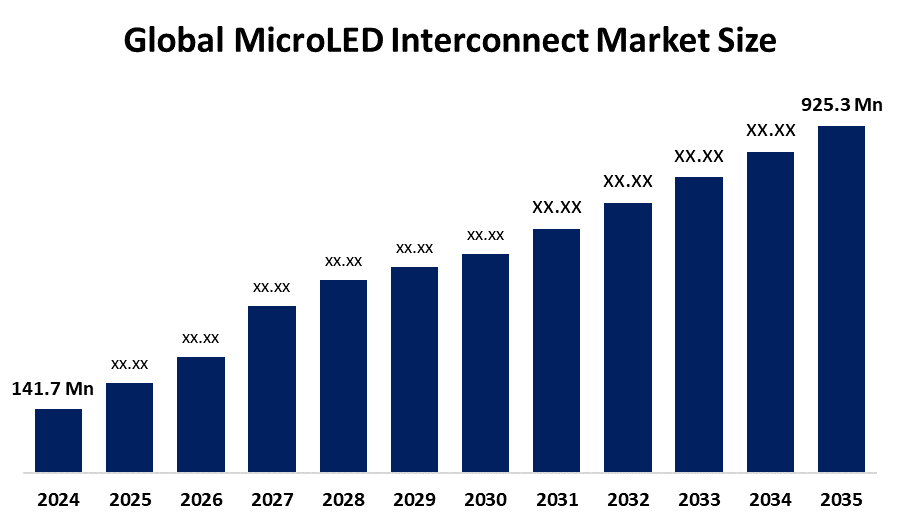
MicroLED Interconnect Market
The global microLED interconnect market is centered on the technology that connects individual microLEDs in next-generation displays. MicroLEDs offer exceptional brightness, energy efficiency, and durability, making them ideal for applications in smartphones, TVs, wearables, and AR/VR devices. The interconnects play a crucial role in enabling seamless communication and high-resolution performance within these displays. Governments worldwide are actively supporting the development of microLED technology through various initiatives and funding programs, especially in countries like the United States, South Korea, and China. These initiatives aim to boost innovation, manufacturing capabilities, and competitiveness in advanced display technologies. The growing demand for high-quality, energy-efficient displays in consumer electronics and automotive industries is driving market growth. With continuous advancements in manufacturing techniques and materials, the microLED interconnect market is poised for significant expansion, playing a vital role in the evolution of the global display technology landscape.
Attractive Opportunities in the MicroLED Interconnect Market
- Combining microLED technology with flexible and transparent displays opens new application possibilities, especially in healthcare, smart devices, and advertising. This innovation can lead to novel product designs and expand microLED usage beyond traditional screens.
- Growing consumer electronics demand in emerging markets, supported by increasing government investments and rising adoption of energy-efficient technologies, presents significant growth potential for microLED interconnect manufacturers and suppliers.
Global MicroLED Interconnect Market Dynamics
DRIVER: Government initiatives and investments in research and development
MicroLED displays offer superior brightness and longer lifespan compared to OLED and LCD technologies, boosting market adoption. Additionally, advancements in manufacturing processes and materials have improved microLED interconnect performance and scalability, enabling mass production. Government initiatives and investments in research and development, especially in tech-forward countries like the US, South Korea, and China, provide strong support for innovation and commercialization. Furthermore, growing applications in automotive displays, digital signage, and wearable devices are expanding the market scope. The shift towards sustainable and low-power technologies also favors microLED interconnects, contributing to the overall market expansion and creating new opportunities for manufacturers and suppliers globally.
RESTRAINT: Technical issues such as yield rates and defects during assembly
The lack of standardized manufacturing processes and the need for specialized equipment can hinder market expansion. Technical issues such as yield rates and defects during assembly also impact overall efficiency and profitability. Furthermore, competition from well-established display technologies like OLED and LCD, which have mature supply chains and lower costs, poses a significant barrier. Limited availability of skilled workforce and R&D resources in some regions may also restrict innovation speed. Lastly, the slow consumer transition from current display technologies to microLED due to higher initial costs can delay widespread market penetration, impacting short-term growth prospects.
OPPORTUNITY: Integrating microLED with flexible and transparent displays opens new application possibilities in healthcare
Growing adoption of microLED in smartphones, AR/VR devices, wearables, and automotive displays offers vast potential. Innovations in manufacturing techniques and materials can reduce costs and improve scalability, making microLED more accessible. Increasing government support and funding for R&D accelerate technological advancements and commercialization. The shift towards energy-efficient and sustainable technologies also boosts microLED’s appeal. Expansion into emerging markets with rising consumer electronics consumption presents further growth avenues. Additionally, integrating microLED with flexible and transparent displays opens new application possibilities in healthcare, advertising, and smart devices. These factors collectively create a fertile environment for manufacturers and suppliers to capitalize on the evolving display technology landscape.
CHALLENGES: High manufacturing complexity
High manufacturing complexity, including precise placement and interconnection of millions of tiny LEDs, leads to increased production costs and lower yields. This makes mass production difficult and limits affordability. Technical challenges such as defect rates during assembly and ensuring uniform brightness, affect product quality. Additionally, the absence of standardized manufacturing processes slows industry-wide adoption. Competition from mature, cost-effective technologies like OLED and LCD also poses a barrier. A limited skilled workforce and specialized equipment requirements further constrains development. Lastly, consumer hesitation to switch from established display technologies due to higher prices delays market penetration. Overcoming these challenges is crucial for unlocking the full potential of microLED interconnect technology.
Global MicroLED Interconnect Market Ecosystem Analysis
The global microLED interconnect market ecosystem includes technology developers like AvicenaTech, semiconductor foundries such as TSMC, and material suppliers like ams OSRAM. Major OEMs like Apple and Samsung drive adoption through heavy investments. Government agencies and industry associations in the US, South Korea, and China support R&D and commercialization efforts. Collaboration among these players helps overcome production and scalability challenges, accelerating market growth. This ecosystem fuels innovation and expansion across consumer electronics, automotive, and AR/VR applications.
Based on the product type, the chip-to-chip led the market, holding the largest revenue share over the forecast period
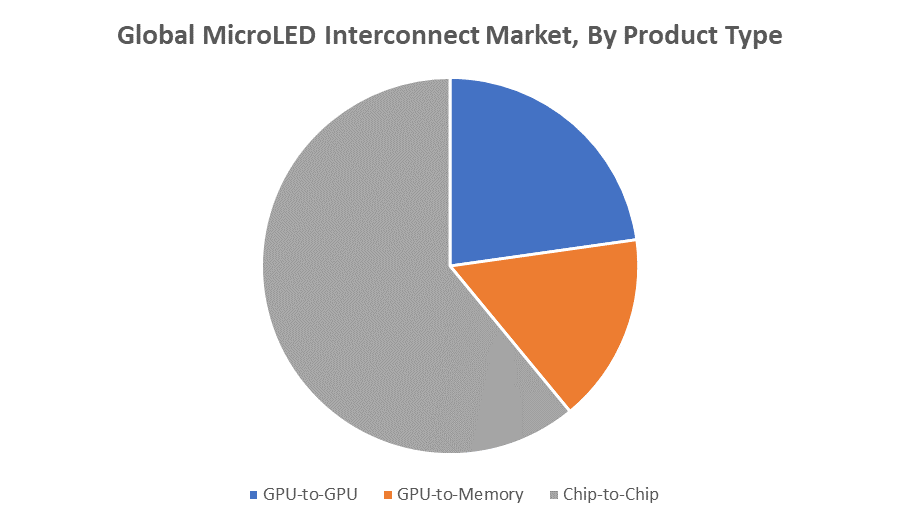
the chip-to-chip segment led the microLED interconnect market, holding the largest revenue share over the forecast period. This dominance is due to its efficient communication between microLED chips, enabling high-speed data transfer and better display performance. Chip-to-chip interconnects support high-resolution, energy-efficient displays, making them ideal for smartphones, TVs, and AR/VR devices. Their scalability and reliability drive strong adoption, contributing significantly to market growth throughout the forecast period.
Based on data rate, the less than 25 Gbps segment accounted for the prominent revenue share of microLED interconnect industry during the forecast period
The less than 25 Gbps segment accounted for the largest revenue share in the microLED interconnect market during the forecast period. This is because lower data rate interconnects are widely used in many consumer electronics and display applications, offering a balance between performance and cost-effectiveness. The segment’s prominence is driven by demand for energy-efficient, reliable connections in devices like smartphones, wearables, and TVs, where ultra-high data rates are not always necessary, making it a preferred choice for manufacturers and boosting market growth.
North America is anticipated to hold the largest market share of the microLED interconnect market during the forecast period
North America is anticipated to hold the largest market share in the microLED interconnect market during the forecast period. This is attributed to the presence of leading technology companies, strong government support for advanced display research, and significant investments in innovation and manufacturing infrastructure. The region's high demand for cutting-edge consumer electronics, AR/VR devices, and automotive displays further drives growth. Additionally, North America's focus on energy-efficient and high-performance display solutions positions it as a key market for microLED interconnect technologies.
Asia Pacific is expected to grow at the fastest CAGR in the microLED interconnect market during the forecast period
Asia Pacific is expected to grow at the fastest CAGR in the microLED interconnect market during the forecast period. This rapid growth is driven by strong demand for advanced display technologies in countries like China, South Korea, and Japan. The region benefits from a large consumer electronics manufacturing base, increasing investments in R\&D, and government initiatives supporting innovation. Expanding applications in smartphones, TVs, wearables, and automotive displays further fuel market expansion, making Asia Pacific a key growth hub for microLED interconnect technology.
Recent Development
- In May 2025, AvicenaTech launched its LightBundle interconnect platform, a scalable solution enabling die-to-die (D2D) communication beyond 10 meters with sub-pJ/bit energy efficiency. This platform utilizes GaN microLED arrays integrated onto CMOS chips, paired with multi-fiber cables and silicon detectors, offering a reliable and cost-effective alternative to laser-based interconnects.
- In May 2025, Taiwan Semiconductor Manufacturing Company Limited partnered with Avicena to manufacture microLED-based interconnects aimed at replacing traditional electrical links with low-cost, energy-efficient optical connections for high-performance GPU communication.
Key Market Players
KEY PLAYERS IN THE MICROLED INTERCONNECT MARKET INCLUDE
- AvicenaTech
- VueReal
- Plessey Semiconductors
- Taiwan Semiconductor Manufacturing Company (TSMC)
- ams OSRAM
- LumiLeds
- Apple
- Samsung Electronics
- Sony Corporations
- Epistar Corporation
Market Segment
This study forecasts revenue at global, regional, and country levels from 2020 to 2035. Spherical Insights has segmented the microLED interconnect market based on the below-mentioned segments:
Global MicroLED Interconnect Market, By Product Type
- GPU-to-GPU
- GPU-to-Memory
- Chip-to-Chip
Global MicroLED Interconnect Market, By Data Rate
- Less than 25 GBPS
- 25 - 50 GBPS
- 50 - 100 Gbps
- More than 100 Gbps
Global MicroLED Interconnect Market, By Regional Analysis
- North America
- Europe
- Germany
- UK
- France
- Italy
- Spain
- Russia
- Rest of Europe
- Asia Pacific
- China
- Japan
- India
- South Korea
- Australia
- Rest of Asia Pacific
- South America
- Brazil
- Argentina
- Rest of South America
- Middle East & Africa
- UAE
- Saudi Arabia
- Qatar
- South Africa
- Rest of the Middle East & Africa
